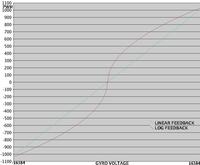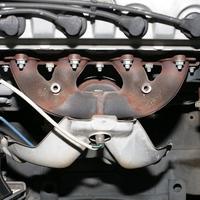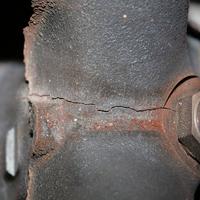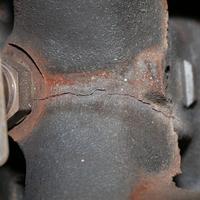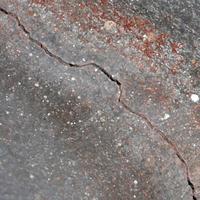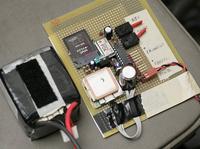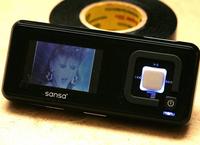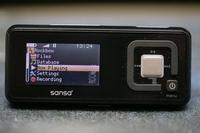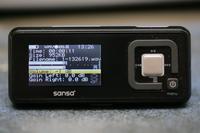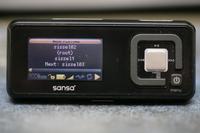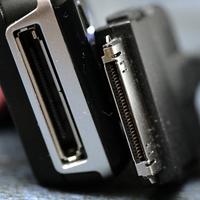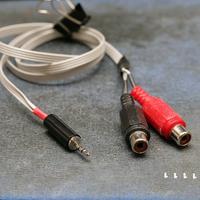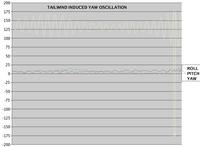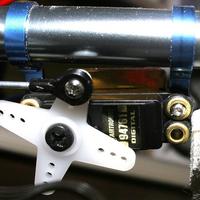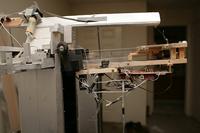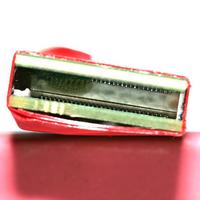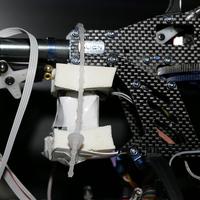Archive for June, 2008
Comments (0)
Add Comment
-
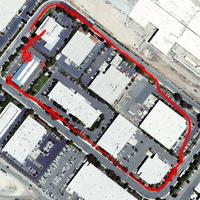 Views: 321
Views: 321
The 1st running test was after a long walk & upwind. -
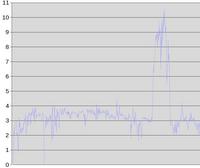 Views: 263
Views: 263
Humans have a maximum speed of 22mph. Currently hitting 40% of maximum human speed. -
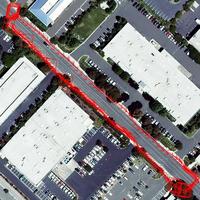 Views: 285
Views: 285
The 2nd running test 24 hours later was downwind & before any walking. -
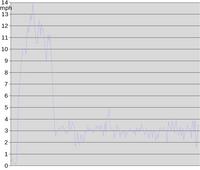 Views: 278
Views: 278
It actually improved to 12mph, 54% of human maximum. At this rate of improvement, should be up to 13mph by November.
-
 Views: 305
Views: 305
In smoke like this, you've got to ask one thing. Did the LiPo's explode? -
 Views: 260
Views: 260
It's U. Know. Where. on Steroids. -
 Views: 272
Views: 272
Captured the starving, desparate creature which has been waking us up every day. That's right. The American. -
 Views: 267
Views: 267
-
 Views: 255
Views: 255
-
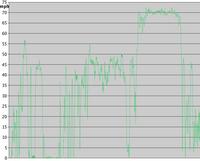 Views: 256
Views: 256
The speed recorded during the commute. -
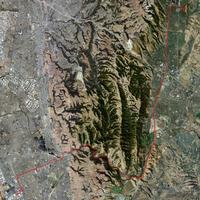 Views: 293
Views: 293
The GPS logger recorded a commute of 45 minutes, including 4 minutes to fill up with Saudi Arabian sweetness. -
 Views: 258
Views: 258
-
 Views: 322
Views: 322
GPS logger with battery. 8 days to build, mainly getting the PIC running. -
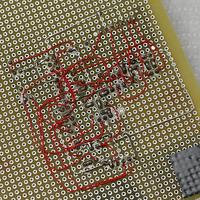 Views: 274
Views: 274
CU of the circuit. -
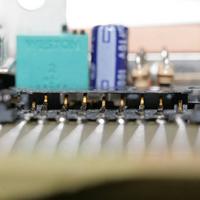 Views: 274
Views: 274
The balky MMC port. -
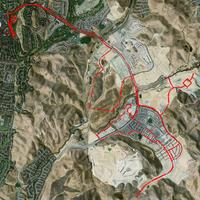 Views: 301
Views: 301
It didn't work very well in HeroineCar. Looks like a bad connection in the MMC port corrupted most of the data or a variable isn't being initialized. U need to power it off for a long while before restarting it. -
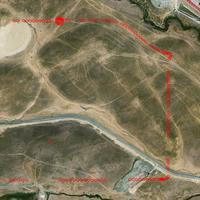 Views: 288
Views: 288
Goog data is almost 10 years old. Obviously their stock is too low. -
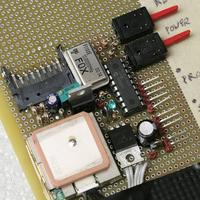 Views: 283
Views: 283
CU of the circuit.
-
 Views: 337
Views: 337
-
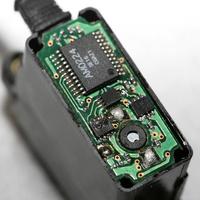 Views: 315
Views: 315
One of the transistors has seen better days. -
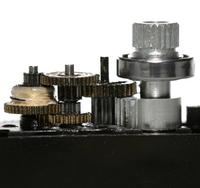 Views: 308
Views: 308
$60 gets you something from China that looks like it came from Switzerland. -
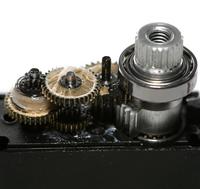 Views: 304
Views: 304
-
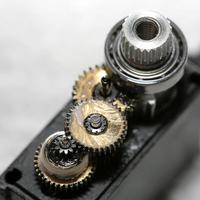 Views: 307
Views: 307
-
 Views: 313
Views: 313
-
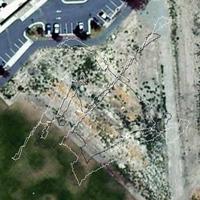 Views: 340
Views: 340
Some operator directed autopilot. Had the tail pointing everywhere to try to draw some vibration. -
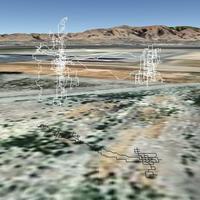 Views: 322
Views: 322
Altitude is still a bit unstable. Maybe it's time for artificial intelligence .
-
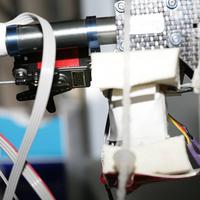 Views: 346
Views: 346
The Futaba S3102 is perfectly useful on the T-Rex. It just needs revo mixing or heading hold. -
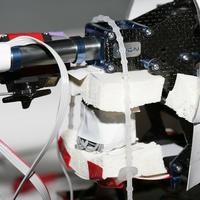 Views: 287
Views: 287
This IMU padding has defeated high frequency vibration for a few minutes in Rain Ramon so far, but Alameda separates the heroines from the girls. -
 Views: 266
Views: 266
Got a good fix on our test range. It is 490ft from the houses & 540ft from the dumpy apartments. The takeoff position would be slightly North. -
 Views: 268
Views: 268
On the way to Sissel -
 Views: 258
Views: 258
-
 Views: 275
Views: 275
-
 Views: 244
Views: 244
Sissel's Funicular train. -
 Views: 289
Views: 289
Sissel central.
-
 Views: 327
Views: 327
-
 Views: 258
Views: 258
-
 Views: 293
Views: 293
-
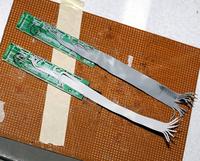 Views: 269
Views: 269
Thumstix Deux is soldered in -
 Views: 277
Views: 277
Maybe it's snugger than Thumstix One -
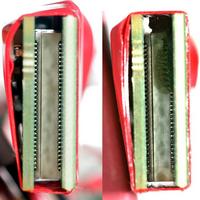 Views: 258
Views: 258
Maybe it isn't. Got to strike up a relationship with Google instead of using Hirose connectors to sell the product. -
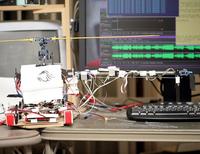 Views: 374
Views: 374
The tail boom is bent, but still functions. -
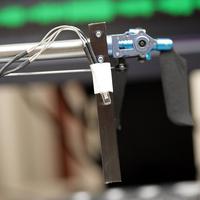 Views: 265
Views: 265
Align raised carbon fiber prices & ghetto tail was born.
-
 Views: 342
Views: 342
Heroine2200's laser assembly was destroyed after 3 years of use, so she's finally getting a new one. -
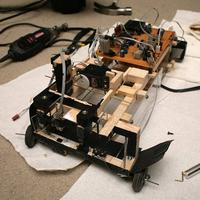 Views: 316
Views: 316
3 days of aligning & it's going in. -
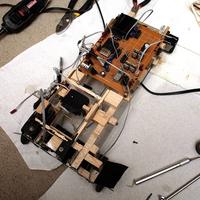 Views: 291
Views: 291
-
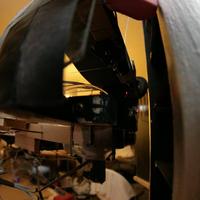 Views: 306
Views: 306
Lasing again & ready for more alignment. -
 Views: 324
Views: 324
VicaCopter is 1000x more expensive than Heroine2200. -
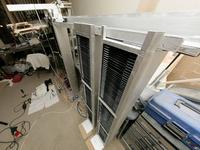 Views: 308
Views: 308
But Heroine2200 is more patriotic.
-
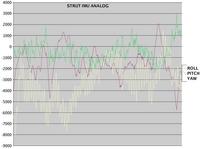 Views: 297
Views: 297
A proper spectrogram would show higher frequencies with strut IMU. Nothing can show the frequency that skewed the MEMS. Fortunately U can see the jaggies of a higher frequency here. -
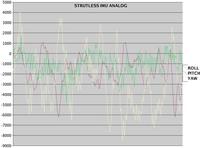 Views: 237
Views: 237
Without the struts, the high frequency jaggies R gone. -
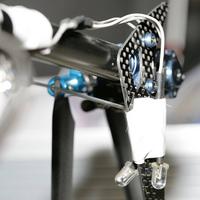 Views: 287
Views: 287
New Align parts didn't just look as fragile as paper, they were as fragile as paper. -
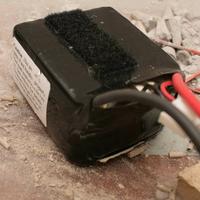 Views: 271
Views: 271
Puffer #2 has arrived. -
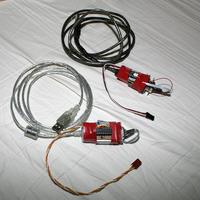 Views: 279
Views: 279
Most people stick MAX232's in every board they make. We stick MAX233's on every USB dongle. Broadcom uses so many MAX232's it's like they're on ecstacy. -
 Views: 261
Views: 261
The struts really did prevent bends.
-
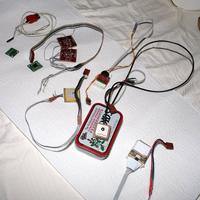 Views: 321
Views: 321
The gadget graveyard is getting so crowded it's like Hillary's gun case. There's still a delusion that sonar may allow automated landings. -
 Views: 295
Views: 295
The newest addition to the gadget graveyard. Took it off the airframe to keep it from getting destroyed. -
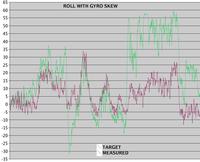 Views: 251
Views: 251
With the I limit at 60deg & throttle=0.60, it barely had enough room to keep the skewed roll gyro from flying away. -
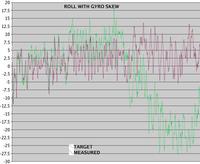 Views: 260
Views: 260
With the I limit at 60deg & throttle=0.70, it had more room to keep the skewed roll gyro from flying away.
